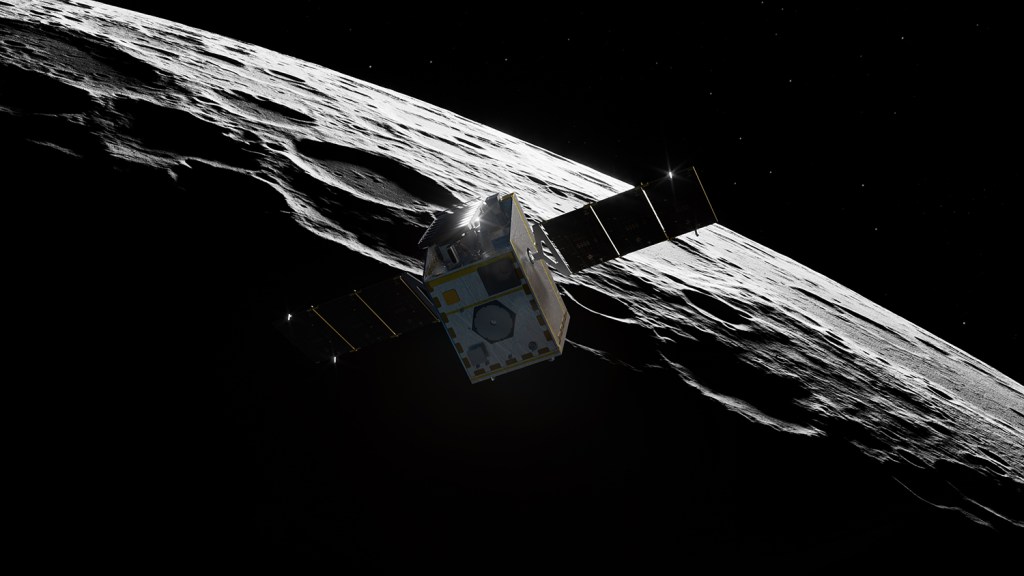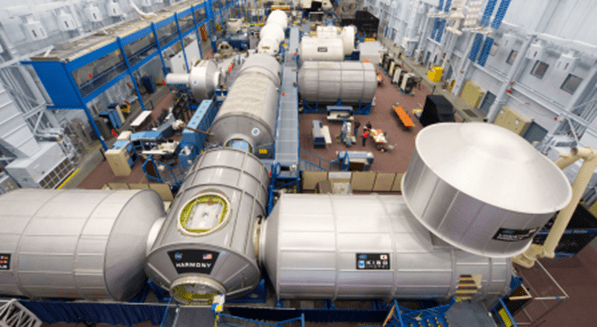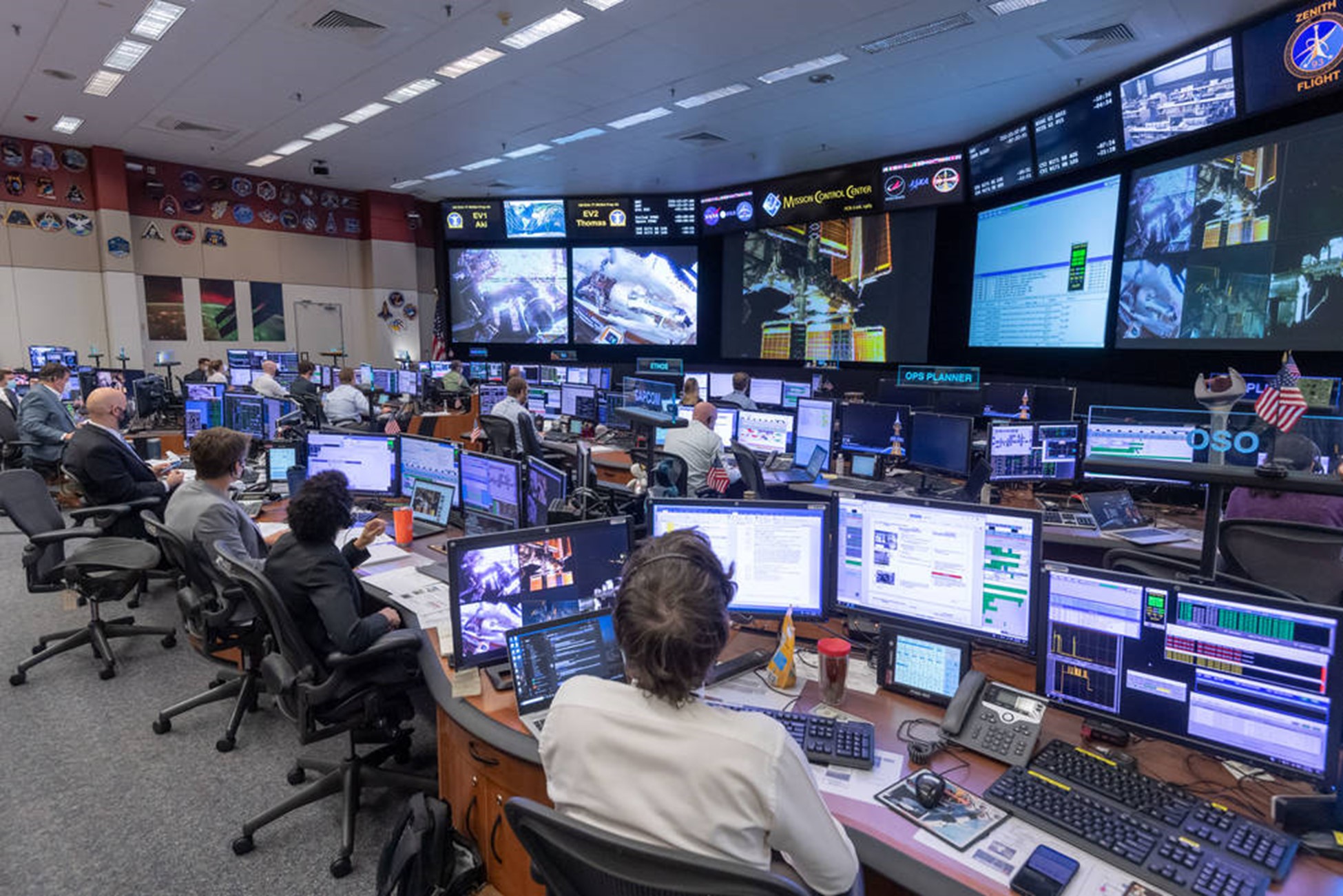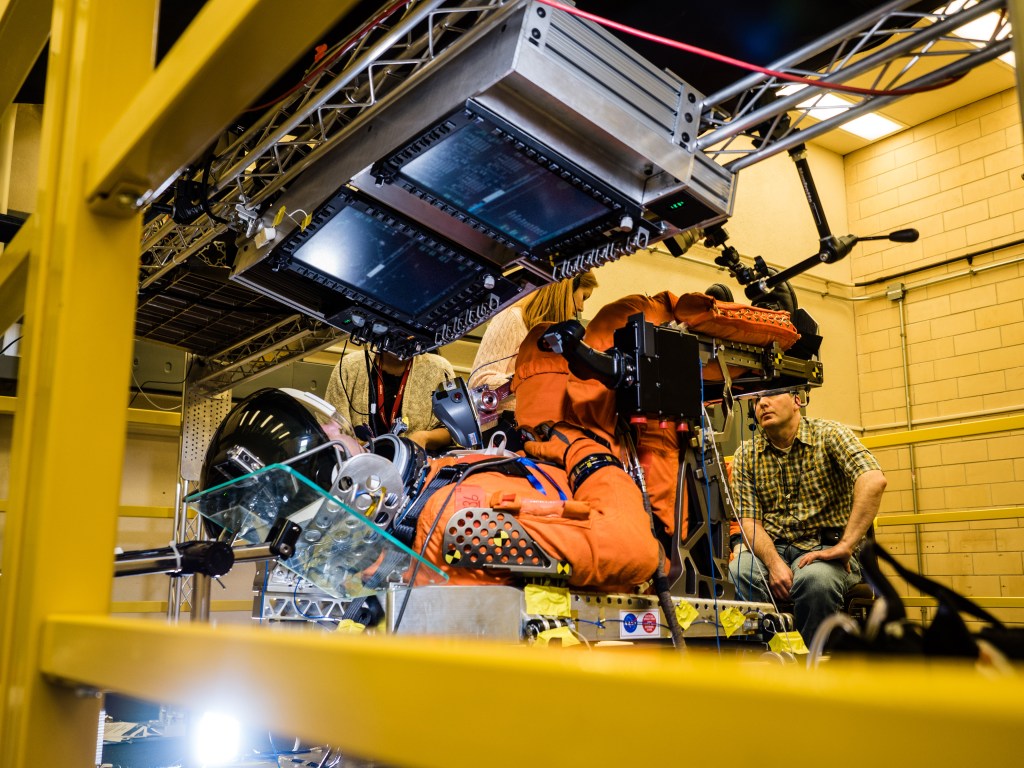Crew & Operations Training

Introduction
As the epicenter of human space exploration, the Johnson Space Center (JSC) serves as the NASA’s hub of crew and human spaceflight operations and training. JSC is the proud home of the nation’s elite astronaut corps, a distinguished group of individuals at the forefront of space exploration. Our state-of-the-art facilities and expert training staff are unrivaled in their ability to provide comprehensive training for astronauts and ground crews alike, ensuring the highest standards of safety and performance for every human spaceflight mission. As a beacon of innovation and collaboration, the Johnson Space Center welcomes external collaborators to leverage our world-class resources, fostering a shared commitment to advancing the boundaries of human spaceflight. Explore the capabilities below, as we invite you to join us in the exciting journey of space exploration at the forefront of discovery.
Training Services
Crew and Flight Controller Training
Overview | Mission training prepares astronauts and flight controllers to achieve mission objectives safely and effectively. NASA JSC Flight Operations Directorate (FOD) is responsible for training astronauts and flight controllers in all aspects of space flight and mission execution.
Details |
- Training ranges from individual student systems knowledge lessons to full scale integrated simulations
- Trainers are certified and training products are validated to ensure quality and accuracy
- Development of Training Products: training needs analysis, curriculum design and development, certification processes, lesson plans, training materials
- Management & Integration of Training: certification plans, scheduling, and student record keeping
- Training conducted in the classroom, part-task trainers, high-fidelity simulators, vehicle mockups, the Neutral Buoyancy Laboratory, the Virtual Reality Lab, on-board the ISS and in other training environments
Private Astronaut Mission (PAM) Training
Overview | Private astronauts traveling to the International Space Station (ISS) need key training performed in NASA’s unique training facilities in preparation for their time on-board the ISS.
Details |
- Specific ISS training content can be provided to Private Astronaut Mission (PAM) crew members in preparation of their launch to the ISS
- PAM training will utilize NASA training materials and be performed in the unique NASA training facilities
- PAM training is designed to prepare the PAM crew to pass the NASA flight readiness review process
- Utilizes an integrated process to support training needs, integration, scheduling, and execution
Mission Training Center (MTC)
Overview | The Mission Training Center’s (MTC) capabilities are currently provided to the following NASA Programs and their providers: International Space Station (ISS), Commercial Crew Program (CCP), Orion, Gateway, and the Human Landing System (HLS). NASA JSC Mission Training Center (MTC) is optimized to support multi-program simulation and training needs in the most efficient and effective approach.
Details |
- An integrated process to understand training needs, development, integration, test/training readiness, and execution
- Scheduling processes optimize MTC resources to enable numerous simultaneous development, training, and operations events
- Full-task and part-task training capabilities for flight controllers and crew
- Stand-alone training events and fully integrated activities linking multiple NASA centers, International Partners, and providers
- Generic skills training and flight specific objective training
- Controlled building/zone access
- Technical power & network connectivity
Space Vehicle Mockup Facility Training
EVA/ISS Airlock Training
Overview | NASA JSC Space Vehicle Mock-up Facility (SVMF) can support suited Extravehicular Activity (EVA) crew training events.
Details |
- ISS airlock mockup and EVA suit support capabilities combine to enable unique EVA donning/doffing training at the SVMF
- EVA suit pressurization cart provides realistic pressurized breathable air to the crew in the SVMF environment
Crew Part Task Trainers (PTTs)
Overview | Crew Part Task Trainers (PTTs) provide training activities focused on a single flight system or subsystem.
Details |
- Develop Crew Part Task Trainers (PTTs) focused on specific systems or phases of flight
- Crew response to simulation generated data on their cockpit displays
- Train nominal operations & emergency response
- Support verification of flight operations procedures and real-time flight operations
- Simulation capabilities include audio/video, flight-like crew displays, and hardware interfaces
- Student and Instructor stations utilized for optimal training
Flight Controller Part Task Trainers (PTTs)
Overview | Flight controller part task trainers (PTTs) provide training activities focused on a single flight system.
Details |
- Develop flight controller PTTs
- Flight controllers respond to simulation generated data on their operations displays
- Train nominal operations & emergency response
- Support verification of flight operations procedures and real-time flight operations
- Simulation capabilities include audio/video, console displays and tools
- Student and Instructor stations utilized for optimal training
Neutral Buoyancy Laboratory Training
Lunar EVA Training
Overview | The Neutral Buoyancy Laboratory (NBL) has unique properties that enable it to support lunar EVA training scenarios and development of lunar EVA tools and hardware.
Details | Neutral Buoyancy Laboratory (NBL) can support two suited crewmembers performing a lunar EVA in close proximity to each other for up to 6.5 hours. Suited crewmembers and their tools/equipment can be weighed out to 1/6g with a realistic center of gravity. EVA crew freedom of motion and accurate center of gravity allows development of fall recovery and incapacitated crew rescue.
- An integrated process to support operations assessments, integration, test readiness, and execution
- Approximately 1/4 of NBL pool floor is currently occupied by Artemis moonscape
- Lunar features designed to simulate Southern pole landing area, complete with high intensity low angle lighting
- Lunar rock modeled after Apollo 17 Split Rock and includes significant geological features
- NBL training can support chipping, trenching, coring, and inclines of up to 20° to simulate walking on craters and uneven terrain
- Sand colored and textured to simulate lunar regolith
- NBL test conductor room can be configured with audio and video delay of 4 sec to simulate comm delay between MCC and lunar surface
Microgravity EVA Training
Overview | The Neutral Buoyancy Laboratory (NBL) is used to train and refine EVA operations to ensure mission success during spacewalks.
Details |
- NBL has full-scale ISS modules with high-fidelity exteriors to support EVA training objectives
- Utilized to support mission planning, procedure development, hardware verification, and astronaut training
- NBL suited events enable the crew to train and experience full duration end-to-end EVA operations
- EVA crewmembers are weighed out to be neutrally buoyant to simulate the weightless environment of space
- Safety, camera, and utility divers support suited training events to ensure safe and effective operations
- EVA tools and hardware are weighed out and optimized to minimize impact to the crewmembers training
- An integrated process to support operations assessments, integration, test readiness, and execution
- Extensive video, audio, and instrumentation capabilities support each training event
Water Surface Operations
Overview | The Neutral Buoyancy Laboratory (NBL) surface can be used to develop and train water surface operations for crew and rescue personnel.
Details |
- Pool surface used to train post landing crew rescue and capsule recovery operations with environmental effects
- Training scenarios can evolve from nominal to off-nominal with multiple failures
- Supports prototype, development, and operations of vehicle up righting systems and crew rescue hardware
- Utilized for aircraft water survival training scenarios
- Facility capabilities to simulate wave motion, darkened conditions, and localized wind/rain environment
- An integrated process to support operations assessments, integration, test readiness, and execution

















![In Memoriam: Jeff Dozier [1944–2024]](https://assets.science.nasa.gov/dynamicimage/assets/science/esd/earth-observer/2025/2025-in-memoriam/InMemoriam-Dozier1.jpg)


















